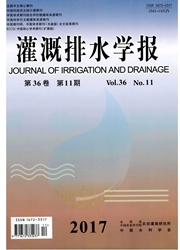

 中文摘要:
中文摘要:
以沙地柏群落中的土壤及其根系为研究对象,模拟采样地含水率与土壤密度,制备根土复合体。对试样进行常规三轴试验中的不排水不固结试验(UU试验)。分析不同根系分布形式及根系直径大小对根土复合体抗剪强度的影响。结果表明,沙地柏根系的加入能够提高土体抗剪强度。各级法向应力下,在特定的含根量下,且根系直径相同时,根土复合体抗剪强度与布根方式之间关系为:水平布根方式下抗剪强度最小,垂直布根居中,复合布根最大。在相同的布根方式下,根土复合体抗剪强度大小与所含根系直径间的关系为含1mm根的根土复合体抗剪强度最小,含2mm根的根土复合体抗剪强度居中,含1.5mm根的根土复合体抗剪强度最大。
 英文摘要:
英文摘要:
Soil and its roots in the community of Sabina vulgaris were regarded as research object. The moisture content and bulk density of plots were simulated, and the soil-root composites were made. Unconsolidated undrained triaxial test was launched for samples to analyze the shear strength of the soil-root composites of different root distribution patterns and different root diameters. The results showed that Sabina vulgalis roots joined to soil could improve the shear strength of soil. Under levels of 100 kPa, 200 kPa, 300 kPa normal stress, in the specific root content, the shear strength of the soil-root composites in the composite distribution was biggest, the shear strength of the soil-root composites in the vertical layout was middle and the shear strength of the soil-root composites in the horizontal layout was least. Under the same root distribution, the shear strength of the soil-root composites containing i. 5 mm roots was maximum. The shear strength of the soil-root composites containing 1.0 mm roots was least, and the shear strength of the soil-root composites containing 2.0 mm roots was middle.
 同期刊论文项目
同期刊论文项目
 同项目期刊论文
同项目期刊论文
 期刊信息
期刊信息
